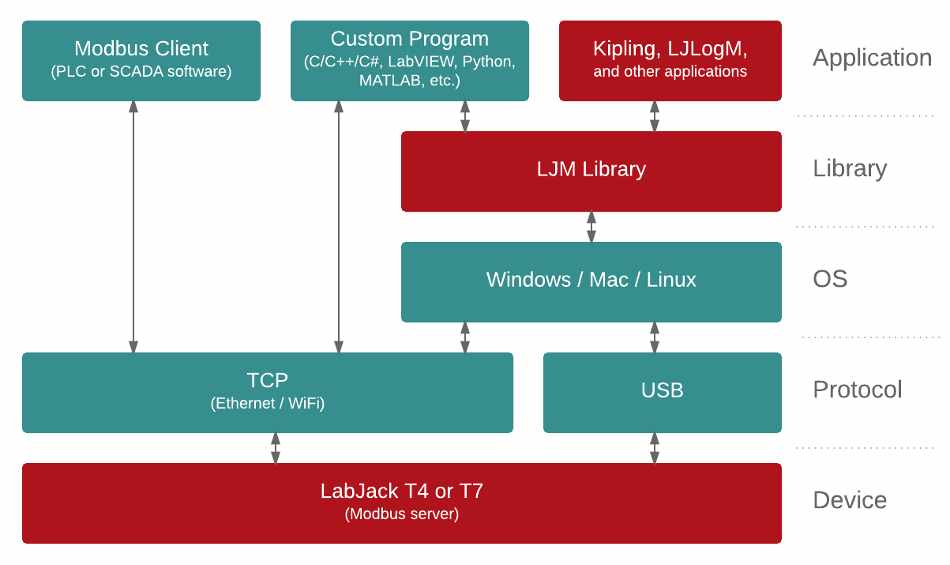Appendix E - Software Options [T-Series Datasheet]

In general, communicating with a T-Series device is quite straightforward. First, look at the T-Series Datasheet or Modbus Map to find the data addresses you want to write or read. Then use one of the software options below to write or read those data addresses.
LabJack software (always free)
Kipling: A graphical utility for testing, configuration, and troubleshooting. The Register Matrix tab can write and read almost any register.
Sample applications:
LJLogM is a simple Windows graphical application to read registers by name at a specified interval. Best for scan rates less than 100 scans per second. It displays the values on the screen, can apply scaling, and can log to file.
LJStreamM is a logging application similar to LJLogM, but it uses stream mode for acquisition. Best for scan rates greater than 100 scans per second.
See the full list
LJM Library: The high-level cross-platform programming library for simplifying device communication.
LJM wrappers/examples are available for many languages including Python, LabVIEW, C, Matlab[1], C#[1] and Visual Basic .NET[1], and DAQFactory[1].
Programming through direct Modbus: You can develop an application that talks directly to the LabJack device over Modbus TCP (Ethernet and WiFi only) using normal TCP sockets and optionally whatever special Modbus support might be available.
Lua Scripting: Lua code can be loaded on the T-Series' processor itself and executed autonomously. Typically this is done as a complement to software running on a host, but some advanced standalone applications use Lua scripts as the only software.
[1] Windows-only. See LJM library examples page for details.
Third-party software
DAQFactory: DAQFactory is measurement and automation software from AzeoTech. The free Express version of DAQFactory works with T-Series Devices with limitations on the number of channels. DAQFactory allows non-programmers to make custom applications. It is easy to collect input data, convert to engineering units, display it, and log it to file, without any programming. Scripting is also supported so you can do advanced applications with control and automatic setting of outputs.
Modbus Client Applications (aka SCADA Software): Most programs that call themselves SCADA are capable of acting as a Modbus client that can directly write/read registers on a Modbus server such as the T7 (Ethernet and WiFi) and the T4 (Ethernet only). PLCs are another common example of Modbus clients and can also write/read directly with a T-Series device.
3rd Party Applications: There are other 3rd party applications available for some LabJack devices.
